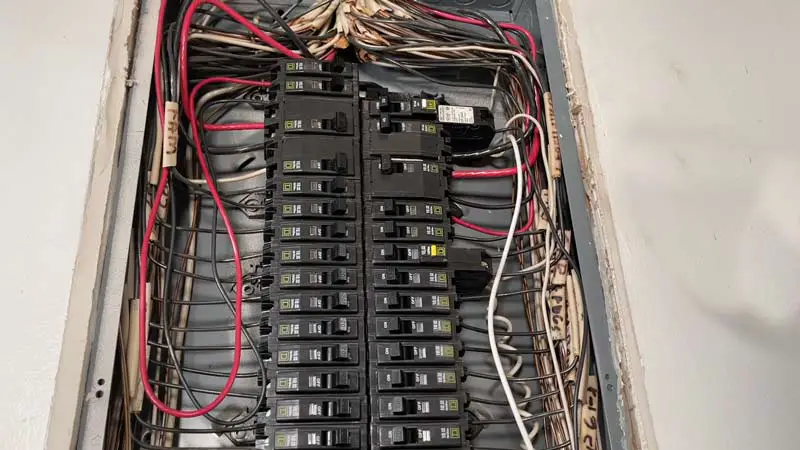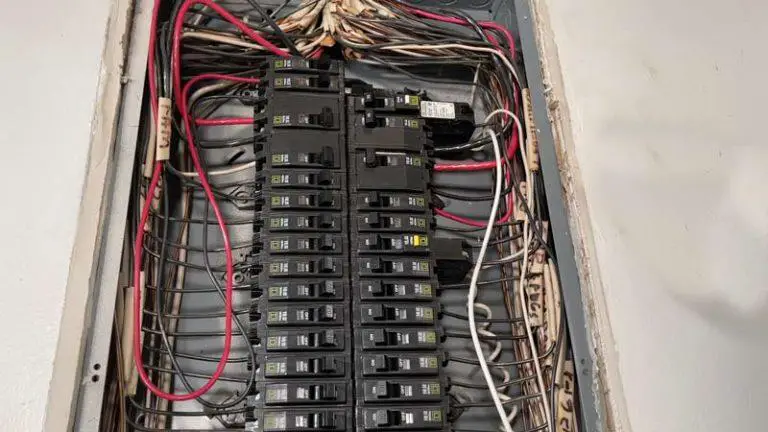How to Change Electrical Panel Without Turning Off Power?

It is not safe to replace an electrical panel without turning off the power. Before replacing the panel, you should always shut off the power to the circuit at the main electrical panel or at the meter. This is to prevent the risk of electrocution and to protect you and others from potentially dangerous electrical shocks.
In this guide, we will provide step-by-step instructions for changing an electrical panel, including the tools and materials you will need and the safety precautions you should take.
It is important to note that this guide is for informational purposes only and is not intended as a substitute for professional advice or instruction. If you are not confident in your ability to safely and properly replace an electrical panel, it is best to hire a licensed electrician to perform the work.
You'll Learn About
Changing Electrical Panel Without Permit
It is not safe to replace an electrical panel without turning off the power. Before replacing the panel, you should always shut off the power to the circuit at the main electrical panel or at the meter. This is to prevent the risk of electrocution and to protect you and others from potentially dangerous electrical shocks.
To change an electrical panel, you will need the following tools:
- A screwdriver or drill with screwdriver bits
- A hammer
- A flat pry bar
- A wire stripper
- A wire cutter
- A wire nut driver or pliers
- A voltage tester
- A drill with hole saw or hole cutter attachments
- A cable ripper (optional)
Here is a step-by-step guide for changing an electrical panel:
- Shut off the power to the circuit at the main electrical panel or at the meter. Use a voltage tester to confirm that the power is off.
- Remove the cover from the old electrical panel. Use a screwdriver or drill to remove the screws that hold the cover in place.
- Disconnect the old panel from the main electrical service. Use a screwdriver or drill to remove the screws that hold the panel to the wall.
- Remove the old panel from the wall. Carefully pull the panel away from the wall, taking care not to damage any of the wires that are connected to it.
- Install the new panel in the same location as the old one. Use a drill with a hole saw or hole cutter attachment to create any new holes that may be needed to mount the new panel.
- Connect the new panel to the main electrical service. Use a wire stripper to strip the insulation from the wires, and then connect the wires to the new panel using wire nuts and a wire nut driver or pliers.
- Install the circuit breakers in the new panel. Use a screwdriver or drill to secure the breakers in place.
- Install the cover on the new panel. Use a screwdriver or drill to secure the cover in place.
- Turn the power back on at the main electrical panel or at the meter. Use a voltage tester to confirm that the power is on and that the new panel is functioning properly.
Remember, it is always best to hire a licensed electrician to replace an electrical panel. They have the knowledge and experience to do the job safely and correctly.
Should You Change Electrical Panel Without Permit?

In most cases, a permit is required for electrical work, including changing an electrical panel, to ensure that the work is done safely and in compliance with local building codes. It is not advisable to change an electrical panel without a permit.
It is best to check with your local building department to determine if a permit is required and to obtain the necessary permits before beginning the work. Hiring a licensed electrician to perform the work will also ensure that it is done safely and properly.
Changing an electrical panel without a permit is not advisable and is potentially dangerous. In most cases, a permit is required for electrical work, including changing an electrical panel, to ensure that the work is done safely and in compliance with local building codes.
Here are the steps for changing an electrical panel with a permit:
- Determine if a permit is required: Before beginning any electrical work, check with your local building department to determine if a permit is required. In most cases, a permit is required for any work involving the electrical panel, including replacing it.
- Obtain the necessary permits: Once you have determined that a permit is required, apply for the permit and wait for it to be approved before beginning the work. This will ensure that the work is done in accordance with local building codes and that it is inspected for safety and compliance.
- Shut off the power: Before beginning any electrical work, shut off the power to the circuit at the main electrical panel or at the meter. Use a voltage tester to confirm that the power is off.
- Remove the cover from the old electrical panel: Use a screwdriver or drill to remove the screws that hold the cover in place.
- Disconnect the old panel from the main electrical service: Use a screwdriver or drill to remove the screws that hold the panel to the wall.
- Remove the old panel from the wall: Carefully pull the panel away from the wall, taking care not to damage any of the wires that are connected to it.
- Install the new panel in the same location as the old one: Use a drill with a hole saw or hole cutter attachment to create any new holes that may be needed to mount the new panel.
- Connect the new panel to the main electrical service: Use a wire stripper to strip the insulation from the wires, and then connect the wires to the new panel using wire nuts and a wire nut driver or pliers.
- Install the circuit breakers in the new panel: Use a screwdriver or drill to secure the breakers in place.
- Install the cover on the new panel: Use a screwdriver or drill to secure the cover in place.
- Turn the power back on at the main electrical panel or at the meter: Use a voltage tester to confirm that the power is on and that the new panel is functioning properly.
Again, it is always best to hire a licensed electrician to replace an electrical panel. They have the knowledge and experience to do the job safely and correctly.
How Much Does It Cost to Change Electrical Panel Without Turning the Power Off?
The cost of replacing an electrical panel can vary depending on a number of factors, such as the size of the panel, the location of the panel, the type of panel being installed, and the cost of labor. On average, the cost of replacing an electrical panel ranges from $800 to $2,000.
Here are some of the potential cost factors involved in replacing an electrical panel:
- Permits: In most cases, a permit is required for electrical work, including replacing an electrical panel. The cost of a permit can vary depending on the location and the scope of the work being done.
- Material costs: The cost of the materials needed to replace an electrical panel, such as the panel itself, circuit breakers, and wiring, can vary depending on the size and type of panel being installed.
- Labor costs: The cost of labor can vary depending on the location and the complexity of the work being done. Hiring a licensed electrician to perform the work will typically cost more than doing it yourself, but it will ensure that the work is done safely and correctly.
In general, it is best to get quotes from multiple contractors and compare the costs before deciding on a contractor for the project. This will help ensure that you get the best possible price for the work.
Frequently Asked Questions
Here are some frequently asked questions (FAQs) about replacing an electrical panel:
What is an Electrical Panel?
An electrical panel, also known as a breaker box or fuse box, is a central component of a building’s electrical system. It contains circuit breakers or fuses that protect the electrical circuits from overloads and short circuits.
Why Would I Need to Replace My Electrical Panel?
There are several reasons why you might need to replace your electrical panel, including:
- If the panel is old and outdated, it may not be able to handle the electrical load of modern appliances and devices.
- If the panel is damaged or faulty, it may not be able to provide adequate protection for your electrical circuits.
- If you are adding new electrical circuits or appliances to your home, you may need a larger panel to accommodate the additional load.
- Can I replace my electrical panel myself?
It is not advisable to replace your electrical panel yourself unless you have the necessary knowledge, skills, and tools to do the work safely and correctly. Electrical work can be dangerous and can result in serious injury or death if not done properly. It is best to hire a licensed electrician to perform the work.
How Long Does It Take to Replace an Electrical Panel?
The time it takes to replace an electrical panel can vary depending on the size of the panel, the location of the panel, and the complexity of the work being done. In general, it can take anywhere from a few hours to a full day to replace an electrical panel.
How Much Does It Cost to Replace an Electrical Panel?
The cost of replacing an electrical panel can vary depending on a number of factors, such as the size of the panel, the location of the panel, the type of panel being installed, and the cost of labor. On average, the cost of replacing an electrical panel ranges from $800 to $2,000. It is best to get quotes from multiple contractors and compare the costs before deciding on a contractor for the project.
Final Words
Replacing an electrical panel without turning off the power is not safe and should not be attempted. It is important to always shut off the power to the circuit before beginning any electrical work, including replacing an electrical panel.
This will prevent the risk of electrocution and protect you and others from potentially dangerous electrical shocks. It is also advisable to hire a licensed electrician to perform the work, as they have the knowledge and experience to do the job safely and correctly.
By following these guidelines, you can ensure that your electrical panel is replaced safely and properly.



